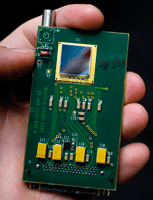
Managing IP at CERN
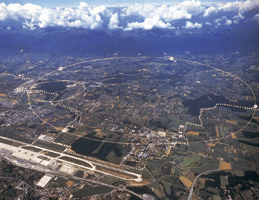
Aerial view of CERN (Photos: CERN)
After several years of experience in the field of technology transfer, the European Organization for Nuclear Research (CERN) recently formalized a policy linked to its technology transfer activities. In this article, CERN’s Knowledge and Technology Transfer Group outline the details of that policy.
Basic science is the primary driver of innovation. That much is simple. But ensuring that technologies developed in the name of basic science turn into useful innovations for society is a much harder nut to crack. CERN’s commitment to transferring knowledge and technology to society dates back to the early days of the laboratory, as does the question of whether or not to protect its intellectual property (IP).
Can IP be protected while preserving the openness that characterizes the fundamental research environment?
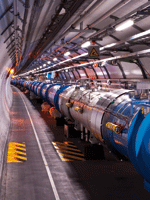
View of the LHC tunnel
To better understand the issue, it is worth pointing out that the “open science” model, within which CERN typically operates, relies on full and timely disclosure of findings and methods. This model recognizes that scientific progress and the expansion of technological knowledge is a cumulative process, according to which scientists “stand on the shoulders” of previous researchers to advance their own research. For this reason, CERN publishes the results of its experimental and theoretical work and makes them widely available.
Some consequences of this approach became evident when CERN developed the control system for the Super Proton Synchrotron (SPS) which came on-stream in 1976. The SPS was the first of CERN’s accelerators to have a computerized control system. Those developing it came up with the concepts of touch screens and trackballs - ideas that were well ahead of their time.
CERN’s main computer supplier was interested, but unable, to invest in the project unless CERN committed not to disclose the technology to third parties. Such a proposition flew in the face of the open science model, and so trackballs and touch screens stayed in the control room. These technologies were put on hold and had to be reinvented and brought to market years later.
Was this a missed opportunity, or just an idea ahead of its time?
“Fundamental science is where new ideas and methods begin that later become commonplace”
The World Wide Web marked a turning point in CERN’s approach to IP and industrial innovation. On April 30, 1993, Tim Berners-Lee persuaded CERN’s management to place it into the public domain. Thanks to this simple gesture – that has effectively revolutionized social, cultural and economic behavior and transformed business structures - the world has a single seamless tool for accessing information online. CERN did not try to harness the economic value of the web or to draw financial revenue from it. It decided to make its IP freely available to everyone.
Had CERN tried to limit access to the web in one way or another, it is more than likely that the world would now have a jumble of different systems for accessing information online, rather than a common standard. These examples clearly illustrate how the activities related to CERN’s basic research program may have applications in domains beyond particle physics.
Acknowledging the importance of knowledge and technology transfer, in the late 1990s, CERN’s member states expressed their wish to make their Organization’s IP available to research institutes and industry in their respective countries (see WIPO Magazine 6/2008).
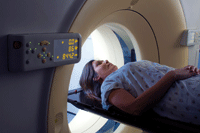
Photo: iStockphoto/Mark Kostich
In response, CERN established a technology transfer office and actively sought to identify technologies ripe for development. There have been successes, such as Large Hadron Collider (LHC) vacuum technology adapted to solar energy; and new electronics for particle detectors that have led to the development of combined PET/MRI scanners for cancer treatment planning.
These two examples demonstrate how patenting and licensing of IP have worked for CERN, for the technologies concerned and, ultimately, for humanity.
CERN has not limited itself to a conventional patenting and licensing approach but has developed successful collaborations with other institutes and industry to further develop its technology for applications in industrial processes or products. The successful Medipix collaboration is a striking example. The silicon detector developed by Medipix has found application in many fields, including color scanning for medical diagnostics, material analyses, gamma cameras, and dosimetry1. Adequately defining the rules governing IP and commercial exploitation from the outset has proven a key factor in the success of the collaboration and the dissemination of its technology.
Over the last decade, CERN’s technology transfer journey has featured situations involving seemingly conflicting objectives:
- building CERN’s IP assets without compromising the open science model;
- generating revenue while maximizing dissemination of technologies;
- providing exclusivity where important investments are required for technological development without favoring any one company;
- encouraging staff to identify technology transfer opportunities without impairing CERN’s scientific program.
On the basis of its past experience, and following discussions with other European technology transfer experts, CERN recently formalized an IP management policy for its technology transfer activities.
Approved in March 2010, the policy strives to balance the Organization’s objectives in terms of IP management with its commitment to disseminate and transfer technology.
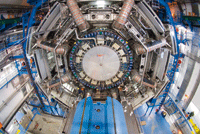
View of detector ATLAS (Photo: SAIC)
The principles governing IP management within the framework of CERN’s scientific program are outlined, as are those governing technology transfer in relation to partnerships and commercial exploitation of the IP. The policy also features an incentive scheme designed to encourage and support technology transfer while ensuring that commercial interests do not override or impinge upon CERN’s scientific program. Revenues generated from the commercialization of CERN technologies are divided among the group responsible for developing the technology, the related department and a special fund to support further technology transfer initiatives.
The policy states that IP management is to be undertaken in a manner compatible with collaborative and open research or open science.
In practice, CERN endeavors to minimize delays in publication whenever patent protection is sought. Patenting is seen as a means, not an end. Patent protection will only be considered under certain circumstances, namely, when an invention is considered to have the potential for commercial exploitation or when it is believed that patent protection will facilitate its transfer or make the invention more attractive to companies. In any case, protected inventions are made freely available to academic institutes for research purpose. Also, the technology transfer partnership agreements signed by CERN with other institutes and/or industry always include provisions ensuring free access to all results necessary for the execution of CERN’s scientific program.
CERN’s IP management policy stipulates that priority is always given to CERN’s scientific program. Technology transfer partnerships are subject to the availability of key personnel and adequate resources.
CERN remains committed to maximizing the dissemination of its technologies. In the event of a conflict between revenue generation and dissemination, dissemination takes precedence. Concretely, CERN will only consider certain types of exclusivity if it believes that this is a prerequisite for the company to invest in CERN technology, or where the technology is developed with a licensee’s financial support. Commercial licenses granted by CERN aim to capture a fair share of the revenues generated through the technology’s commercialization.
Other elements of the policy are directly related to CERN’s convention, such as the rule forbidding any technology transfer for military applications, or to the limits and legal framework pertaining to its international status.
CERN’s recent agreement with WIPO will allow each organization to benefit from the other’s experience. CERN is already taking part in WIPO’s technology licensing training program, where its experience in managing IP and technology transfer is used to demonstrate the possible uses of IP in basic research settings.
| About CERN |
|---|
|
Founded in 1954, CERN is the world’s leading laboratory for particle physics. It is located on the Franco-Swiss border near Geneva and was one of Europe’s first joint ventures. It has 20 European member states, but many non-European countries are also involved in different ways. Scientists from some 580 institutes and universities around the world use CERN’s facilities. Its business is to find out what the universe is made of and how it works. At CERN, the world’s largest and most complex scientific instruments (such as the LHC) are used to study the basic constituents – or fundamental particles – of matter. By studying what happens when these particles collide, physicists learn about the laws of nature. The Large Hadron ColliderThe LHC was built to help scientists answer key unresolved questions in particle physics. This gigantic scientific instrument, which spans the Franco/Swiss border some 100 meters underground, is a particle accelerator. It is used by physicists to study the smallest known particles - the fundamental building blocks of all things. Physicists are using the LHC to recreate the conditions that occurred just after the Big Bang, by colliding two beams of subatomic particles, known as “hadrons”, head-on at very high levels of energy. Teams of physicists from around the world are analyzing the particles created in the collisions, using special detectors in six experiments dedicated to the LHC. |
| About Medipix |
|---|
|
Scientists at CERN have designed microchips that can be combined with semiconductor sensors to detect, track and/or identify high-energy particles – the basic building blocks of the universe. Both the sensors and the microchips - which together form a detector - are divided into tiny sensitive elements (pixels), similar to those in a digital camera. The detectors produce images with high resolution, high contrast and almost no noise. They are so sensitive that they can detect individual X-ray photons (electromagnetic radiation, including visible light and X-rays, is made up of particles called photons). Medipix is a spin-off of the electronics developed for detectors used at the Large Hadron Collider. CERN researchers saw the potential for transferring this technology outside the high-energy physics domain. Today, through the Medipix collaborations composed of over 17 research institutes and universities worldwide, Medipix detectors are widely used in many different fields, including material analysis, electron microscopy, and medical imaging for cancer detection, as well as in numerous other medical and biological applications. Learn more at: http://medipix.web.cern.ch/MEDIPIX/ |
______________________________
1 Dosimetry: a scientific subspecialty in the fields of health physics and medical physics that is focused on the calculation of internal and external doses of ionizing radiation.
The WIPO Magazine is intended to help broaden public understanding of intellectual property and of WIPO’s work, and is not an official document of WIPO. The designations employed and the presentation of material throughout this publication do not imply the expression of any opinion whatsoever on the part of WIPO concerning the legal status of any country, territory or area or of its authorities, or concerning the delimitation of its frontiers or boundaries. This publication is not intended to reflect the views of the Member States or the WIPO Secretariat. The mention of specific companies or products of manufacturers does not imply that they are endorsed or recommended by WIPO in preference to others of a similar nature that are not mentioned.
